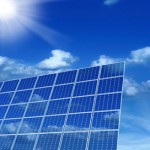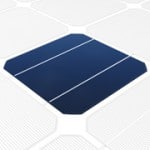
Solar power systems can take on many forms, from stand-alone panels to charge a battery, to off-grid PV systems to power a home, to grid-connected systems providing an income when the sun shines. Before installing a solar power system, it is crucial to understand the key components that go into making up a solar power system to ensure the money you invest is well spent. The main component of any solar power system is the photovoltaic panels which convert sunlight directly into electricity. The size number, type and efficiency are key factors when choosing a system. Charge controllers, inverters, storage batteries, and cabling all add to the cost

Solar power inverters convert the continuous DC current generated by solar panels, dynamos and generators into an AC supply using electronic switching techniques. Solar power inverters are used in small single-phase residential photovoltaic (PV) systems up to large scale three-phase applications. Grid connected solar power inverters synchronise the electricity they produce with the local utility grids AC electricity, allowing the system to feed the solar made electricity directly into the grid without the need for storage batteries

Grid connected photovoltaic systems deliver its solar energy directly to the permanently connected utility grid via single-phase or three-phase inverter. Grid connected PV systems are the most common type of installed solar power scheme compared to stand-alone photovoltaic systems, which require batteries for energy storage. Battery-less grid connected PV systems are therefore more cost effective, requiring less components and maintenance but require a higher quality inverter.

Stand alone photovoltaic solar systems are completely disconnected from the utility grid so all the electrical energy required must be generated by solar, wind, hydro or some other type of renewable energy system. Generally, stand alone PV systems consist of a PV panel, DC generator, some form of energy storage (for example a battery), controllers, inverters and some types of AC or DC load elements. In stand alone PV systems its DC and AC loads all share the same battery bank for night time energy storage.

Photovoltaic solar cells are silicon semiconductor devices which produce electricity by converting the solar energy generated from the sun in the form of visible light, ultra-violet, or infra-red radiation into a DC current by using the photovoltaic action of the cell without the use of any moving parts. The amount of electrical power, expressed in watts, generated by a photovoltaic solar cell depends on the amount of solar irradiance and other conditions such as temperature and cloud cover with the maximum or peak power a PV cell can deliver at full sun with the cell uncovered.

Solar power uses the suns radiant light energy to produce heat, light and power in the form of electricity, to power our world making solar power a true renewable energy resource. The solar radiation reaching the earth’s surface equals about 1000 watts per square metre in clear conditions when the sun is near the zenith making it inexhaustible and locally available everywhere on the earth. One of the best uses of solar power is in using photovoltaics to generate electricity and thermal panels to heat water were concentrated solar power uses the immense heat provided by solar irradiation concentrated on a small area.